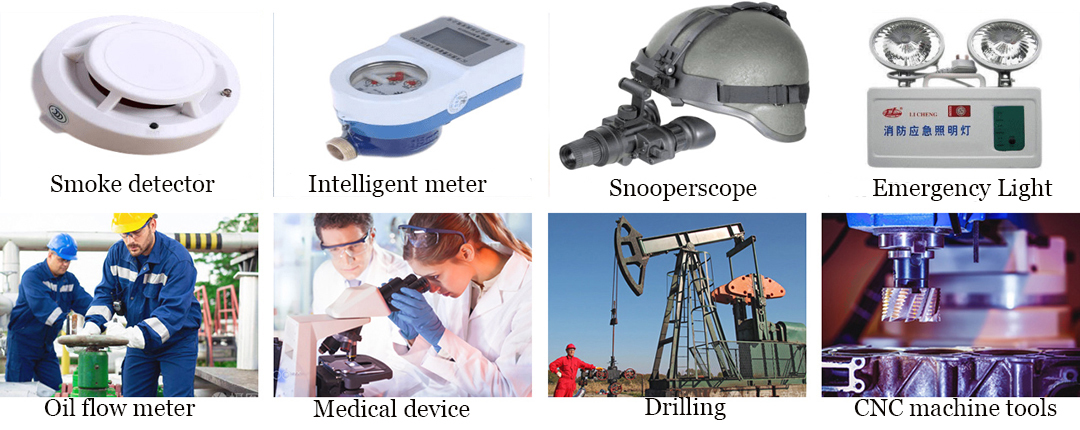High-Temperature Batteries: Advancements, Applications, and the Future of Energy Storage
High-Temperature Batteries: Advancements, Applications, and the Future of Energy Storage
In the ever-evolving landscape of energy storage technologies, high-temperature batteries have emerged as a promising solution for a wide array of industrial, military, and even consumer applications. These batteries, designed to operate efficiently and safely at elevated temperatures, represent a significant departure from traditional battery systems that often struggle to maintain performance under harsh conditions. From primary batteries like Lithium-Sulfuryl Chloride (LiSOCl₂) to specialized lithium-ion batteries tailored for high-temperature environments, the development of these advanced energy storage devices has sparked new possibilities for energy independence, increased efficiency, and reduced maintenance costs.
Introduction to High-Temperature Batteries
High-temperature batteries are defined by their ability to function effectively at temperatures exceeding the typical operating range of conventional batteries, which is generally around 20°C to 45°C. These batteries are specifically engineered with materials and chemistries that can withstand and even benefit from higher temperatures, enabling them to deliver enhanced performance in extreme environments. The appeal of high-temperature batteries lies in their potential to improve energy density, extend cycle life, and reduce thermal management requirements, thereby making them ideal for applications where conventional batteries struggle.
Primary High-Temperature Batteries: The Case of LiSOCl₂ battery
Among the primary high-temperature batteries, Lithium-Sulfuryl Chloride (LiSOCl₂) stands out as a pioneering technology. This battery type utilizes lithium metal as the anode and a sulfuryl chloride (SOCl₂) electrolyte, offering several advantages over traditional primary batteries. Firstly, LiSOCl₂ batteries exhibit exceptional energy density, making them suitable for applications requiring high energy output in compact packages. Secondly, their ability to operate at temperatures ranging from -55°C to 85°C (with optimal performance between 60°C and 80°C) makes them ideal for extreme environments such as deep-sea exploration, aerospace missions, and military applications.

Advantages:
High Energy Density: Provides longer runtimes or more power for a given size and weight.
Wide Operating Temperature Range: Enables operation in extreme conditions.
Long Shelf Life: Can maintain capacity for years under proper storage conditions.
Stable Voltage Output: Delivers consistent voltage throughout the discharge cycle.
Applications:
Spacecraft and Satellites: Where lightweight, high-energy batteries are crucial for extended missions.
Oil and Gas Exploration: For downhole tools and sensors in deep, hot wells.
Emergency and Security Systems: Where reliability and durability are paramount.
Lithium-Ion Batteries for High-Temperature Applications
While LiSOCl₂ and other primary high-temperature batteries excel in specific niches, the advancements in lithium-ion (Li-ion) battery technology have also led to the development of specialized Li-ion cells capable of operating at higher temperatures. These high-temperature Li-ion batteries employ advanced electrolyte formulations, modified electrode materials, and enhanced thermal management systems to maintain stable performance even in extreme conditions.
Key Developments:
Electrolyte Improvements: The use of specialized solvents and additives can increase the electrolyte's thermal stability, preventing decomposition at high temperatures.
Electrode Materials: New cathode and anode materials, such as silicon-based anodes and nickel-rich cathodes, are being explored to improve high-temperature performance and energy density.
Thermal Management: Integrated cooling systems and advanced insulation materials help maintain optimal temperatures within the battery pack, extending cycle life and improving safety.
Challenges and Solutions:
Safety Concerns: High temperatures can exacerbate thermal runaway and increase the risk of fire or explosion. This necessitates robust safety mechanisms, including temperature sensors, pressure relief valves, and advanced battery management systems (BMS).
Cycle Life Degradation: Elevated temperatures can accelerate aging processes, reducing battery lifespan. Researchers are focusing on developing materials that are more resistant to degradation at high temperatures.
Cost: Specialized materials and complex manufacturing processes can drive up the cost of high-temperature Li-ion batteries. Economies of scale and further research into cost-effective materials may help mitigate this issue.
Specialty High-Temperature Batteries for Unique Applications
Beyond primary and secondary Li-ion batteries, there exists a range of specialty high-temperature batteries tailored for specific applications. These include solid-state batteries, molten salt batteries, and even hybrid systems that combine multiple technologies to harness the best of each.
Solid-State Batteries: Solid-state batteries, which use solid electrolytes instead of liquid or gel-based electrolytes, are seen as a promising technology for high-temperature applications.
In the realm of specialized batteries designed for extreme conditions, the concept of high-temperature batteries has garnered significant attention. Among these, the Li-SOCl2 (lithium-thionyl chloride) battery stands out as a game-changer, particularly in applications where temperatures soar well above typical operating ranges.
These Li-SOCl2 high-temperature batteries, including specialized variants like the ones tailored for WMD (weapon system) or industrial use, demonstrate remarkable resilience in environments exceeding 150°C and even reaching 200°C. Their ability to maintain stable performance under such intense heat sets them apart from conventional batteries, which often struggle or fail under such conditions.
The lithium chemistry within these batteries is inherently suited for high-temperature operation, allowing them to deliver reliable power without compromising safety or efficiency. This makes them invaluable in applications such as deep-sea exploration, aerospace, and industrial processes where ambient temperatures can soar.
Moreover, the development of too high temperature batteries, like advanced iterations of Li-SOCl2, pushes the boundaries of what's possible.





